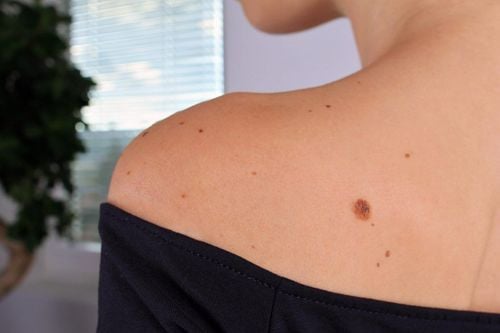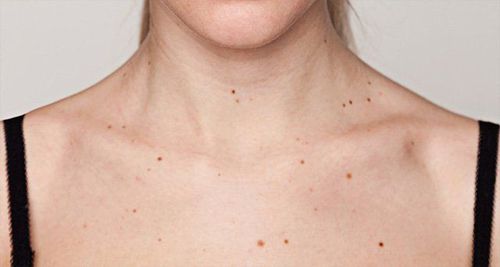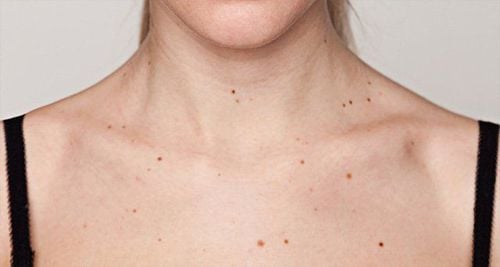This is an automatically translated article.
Moles are black or brown spots on the skin that can appear anywhere on the body. Some types of moles grow in central locations that are unsightly, so many people want to remove them. So what happens when you remove a mole on your skin?
1. How to recognize a mole that is at risk of cancer
Moles appear when skin cells grow in clusters instead of spreading throughout the skin. These cells are called melanocytes and they produce the pigment that gives the skin its natural color. Moles can darken after sun exposure.
On the body of each person will have about 40 moles, most of them are benign. However, after many years, moles usually change slowly, protrude, or change color. In many cases, hairs will grow on moles. Some moles may remain unchanged, while others may slowly disappear over time.
If you notice any unusual signs of moles such as: change in color, shape, size.... then you need to go to the hospital for diagnosis. Because it could be a sign of skin cancer.
First, the doctor will take a close look at the appearance of the mole. To ensure more accurate results, your doctor will perform a skin biopsy and send this sample to a lab. If the result is positive, the mole is a sign of cancer. Your doctor will conduct treatment to remove these dangerous cells. If it is benign, the doctor will proceed to remove it quickly and easily.
2. What happens when you have a mole on your skin?
Usually, it will take about a week for the mole to clear and start to scab. Depending on the location, care, and severity of the mole, the healing time will vary.After mole removal, there are some moles that will not return, but others may still form. Some reasons why moles come back after removal such as:
2.1. Mole removal is not thorough due to not choosing the address carefully
Usually, moles will be completely removed after bleaching. However, if you choose a reputable cosmetic facility, poor workmanship will not remove deep moles. After a while, this root will proliferate and the mole will reappear. Therefore, to reduce costs and save time, you should pay attention to mole removal at reputable facilities.
2.2. Incorrect post-surgery care
After minor surgery, it takes you about 3 days for the skin to clear the mole to scab over and nearly 2 weeks for the wound to scab. Therefore, you need to moisturize this bleached skin well with transparent hydrocolloid bandages to help reduce scarring, not to recur, and more aesthetically pleasing.
2.3. Unscientific diet
After removing the mole, if you do not abstain from foods properly, it will leave keloid scars and grow back. Therefore, you need to limit eating foods such as chicken, water spinach, sticky rice,...

Chế độ ăn ảnh hưởng đến quá trình phục hồi sau tẩy nốt ruồi
2.4. Regular exposure to the sun
Sunlight can increase the production of melanin pigment in the skin causing moles to regrow. Therefore, you need to avoid sun and UV rays carefully after removing moles.
3. Some measures to remove moles
Mole removal is a simple minor surgery. You can refer to some mole removal measures as follows:
3.1. Surgical removal
Surgical removal is a method of removing moles. In it, the doctor will numb the spot where the mole appears. Then, using a surgical blade, cut off the mole and some of the skin around it. Finally, the doctor will perform sutures.
3.2. Minor surgery
This remedy is applied to smaller moles. After numbing the area where the mole is to be removed, the doctor will use a small blade to scrape the mole and some of the tissue underneath the mole. Usually in this case, the doctor will not necessarily perform stitches.
No matter what method of mole removal, there is a risk of scarring. The biggest possible risk is infection. Therefore, you need to choose reputable medical facilities and skilled doctors to remove moles.
Please dial HOTLINE for more information or register for an appointment HERE. Download MyVinmec app to make appointments faster and to manage your bookings easily.
Reference source: webmd.com













